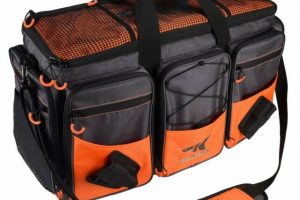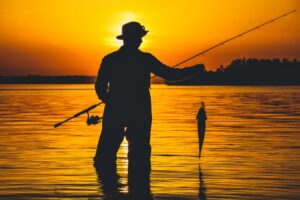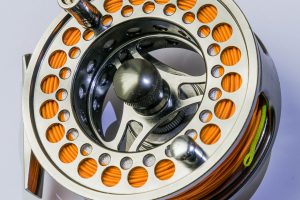The Portuguese word Garoupa, which we get the English word “grouper,” may be an indigenous South American language. Several species of grouper, including the Queensland grouper, are referred to as “groper” rather than “grouper.”
While grouper is initially classified as a significant fish species, Historical analysis has shown that Garuopa is the Portuguese name for grouper species. This means that if you’re confused about Garoupa and Grouper.

What is the Difference Between Grouper and Garoupa?
The Portuguese word Garoupa, which we obtain the English word “grouper” from, may have its roots in an indigenous language of South America. “Grouper” comes from the Portuguese word Garoupa. In Australia, the word “groper” is used interchangeably with “grouper” to refer to many different species of grouper, notably the Queensland grouper (Epinephelus lanceolatus).
The Origins of the Names
Regarding fish names, it can be difficult to tell the difference between two similarly looking spellings of the same species. That’s why some fish species have similar names in different countries. Take grouper, for example- large, silvery fish that live in the world’s tropical waters. The indigenous South American language may be the source of the Portuguese term garoupa, from which we obtain the English word “grouper. Interestingly, all represent the same fish – with different pronunciation and spelling. By naming the fish similarly, people hoped they would be more likely to remember which species they were talking about. Different spelling doesn’t make them two completely different species that should not be confused with each other.

Why is grouper called grouper?
The Portuguese term garoupa is where we get the English word “grouper,” which may have been borrowed from an indigenous South American language.
Several species of grouper, including the Queensland grouper, are referred to as “groper” rather than “grouper” in Australia (Epinephelus lanceolatus). Polyprion oxygeneios, known as hpuku to Maori, is the wreckfish often known as “groper” in New Zealand. Groupers are called lapu-lapu on the island of Luzon but are called pugapo in the islands of the Visayas and Mindanao. The fish is commonly consumed in the Persian Gulf region, known as “hammour.” The fish is called mero in Latin America.
Species belonging to the tribes Grammistini and Diploprionini develop a mucus-like toxin called grammistin in their skin; this mucus produces a foam that is toxic to neighboring fish when the fish are trapped in a small space or under stress. The 5th Edition of Fishes of the World places these two groups as tribes within the subfamily Epinephelinae. However, they have also been placed in their own families and subfamilies. Whatever the origin of the name Grouper, the fish is unique and has impressed many with its size and color.
What are some other names for the same type of Garoupa fish?
The Garuopa or Grouper is a large, predatory fish that you can find in both tropical and temperate water around the world.
Grouper is one name for the same type of fish, but there are other names for it as well. Golf grouper, jewfish, blackbass, esonue grouper, giant seabass, grouper, hamlet, southern jewfish, and spotted jewfish are all names for this species in English. The Portuguese call it badejo; the Spanish call it cherna; the Portuguese call it garoupa; the Sranans call it gran morgoe; the Spanish call it guasa; the Japanese call it hata; the Norwegians call it havabbor; the Swedes call it havsabborre; the Poles call it itajara zmienna; the Norwegians call it judefisk; the Spanish call it mero (German).
Where Is Grouper or Garoupa Found?
From Florida south to Brazil, in the western Atlantic Ocean, the grouper can be found in both the Gulf of Mexico and the Caribbean Sea. While uncommon in the Canary Islands, you can also spot this species from Senegal to Congo in the eastern Atlantic Ocean. The eastern Pacific Ocean, from the Gulf of California to Peru, is also home to this species.
The goliath grouper is found in coastal waters from a depth of just a few feet to as much as 46 meters, and it is most at home on sandy, rocky, or muddy bottoms. Juveniles with distinctive markings are commonly seen in mangroves and brackish estuaries, particularly in and around oyster bars.
As one of the rare groupers, the goliath grouper stands out for being present in brackish waters. The adult individuals of this fish species tend to live alone and only use small territories. When threatened, it displays an open mouth and trembling body near its safe havens, which include caverns, wrecks, and ledges. The muscular contraction of the swim bladder in a goliath grouper can emit a distinct audible rumbling sound that serves as an additional warning. The goliath grouper uses its echolocation sound to find other goliath groupers and to travel enormous distances underwater.
Appearance of Garoupa or Grouper
The Atlantic Ocean is home to various sea bass species, the largest of which is the Goliath grouper. The body is thick and elongated, with a breadth that exceeds 50% of its overall length. It has a large, round head with tiny eyes. The soft dorsal rays are longer than the first dorsal spines, and the fins are joined together seamlessly. Notches can be seen in the membranes separating the dorsal fin’s individual segments. The pectoral fin is more prominent and more rounded than the pelvic fin. Scales and thick skin cover the base of the pliable dorsal and anal fins. There is no sharp point on the tail.
Conclusion
Grouper, also known as garuopa or grouper fish, is a type of fish you can find in various parts of the world. Several varieties of grouper are not always easy to distinguish, making it difficult to know what kind of grouper you’re buying if you don’t know what to look for. In this article, we discussed the differences between two names of grouper species: grouper and garuopa.












Pingback: Is a Grouper a Mero? | Reel Fishing Guru
Pingback: What is the Difference Between a Grouper and Branzino? | Reel Fishing Guru